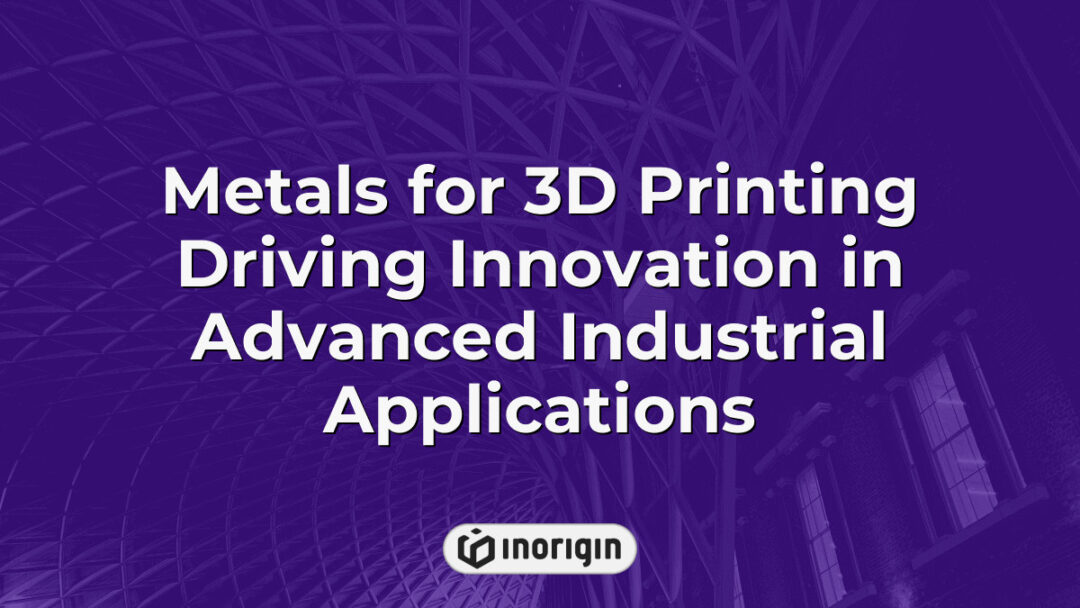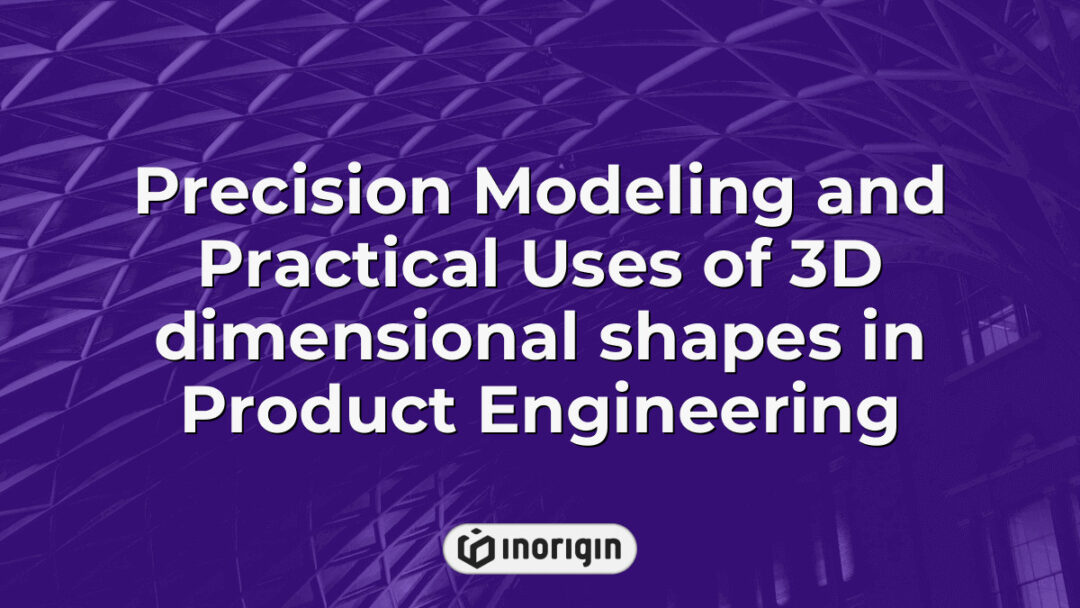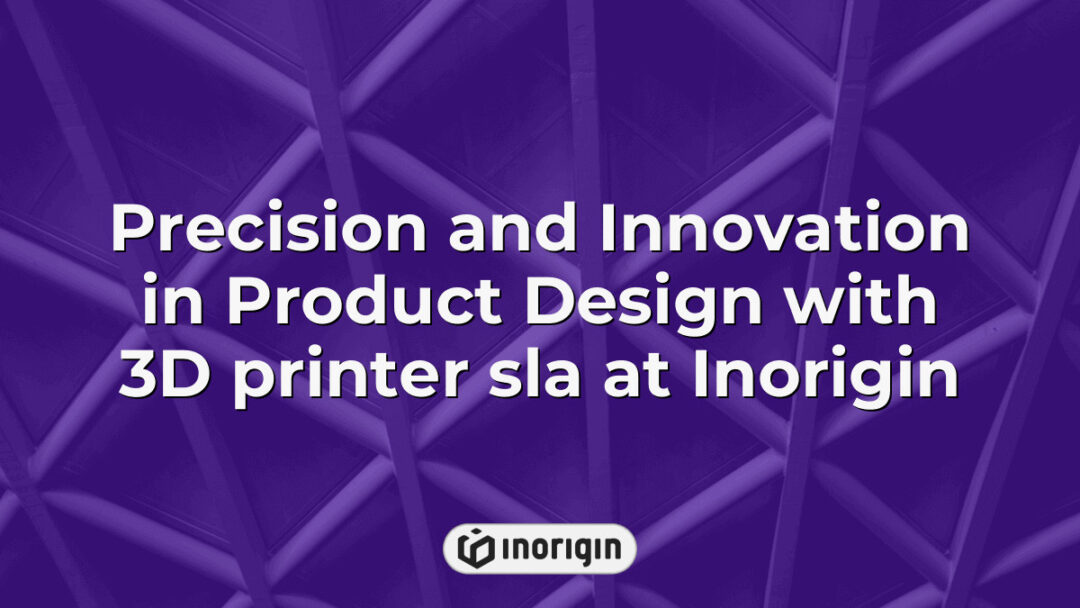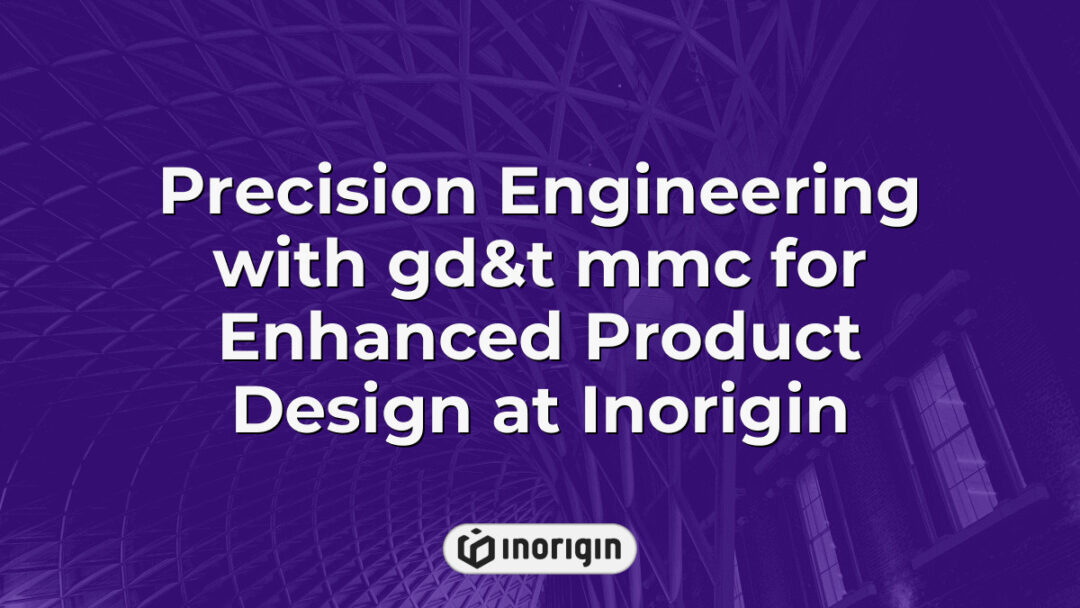In the rapidly evolving landscape of additive manufacturing, the emergence of metals for 3D printing presents a revolutionary frontier, one that promises to redefine the boundaries of design, functionality, and production efficiency. This transformative technology, still shrouded in complexity and innovation, holds the potential to disrupt traditional manufacturing paradigms, merging the realms of artistry and engineering in ways previously deemed impossible. As developments unfold, the critical question arises: what materials will not only withstand the rigor of industrial applications but also offer the unparalleled versatility required to push the limits of creativity? An exploration of the diverse metals utilized in 3D printing not only unveils their unique properties and applications but also invites a deeper understanding of the future of manufacturing and its implications for various industries.
| Aspect | Key Takeaway |
|---|---|
| Focus Keyword Overview | Metals for 3D printing enable unparalleled design flexibility and production efficiency, revolutionizing modern manufacturing across multiple industries. |
| Common Metals Used | Stainless steel and titanium alloys are prevalent metals for 3D printing, valued for their strength, corrosion resistance, and suitability for complex geometries. |
| Technological Advancements | Innovations like Selective Laser Melting (SLM) and Direct Energy Deposition (DED) facilitate the creation of intricate metal parts with enhanced mechanical properties. |
| Industrial Applications | Metal 3D printing supports aerospace, automotive, and healthcare sectors by producing components that increase performance, safety, and customization. |
| Advantages | This technology reduces material waste, offers superior thermal properties, and allows for rapid prototyping and production of durable metal components. |
| Challenges | High equipment and metal powder costs, plus the need for specialized expertise, present accessibility challenges, especially for smaller enterprises. |
| Future Trends | Sustainability initiatives and material efficiency improvements are expected to drive the next wave of metal 3D printing innovations. |
Common Types of Metals Used in 3D Printing
In recent studies, it has been determined that the metal 3D printing market is projected to grow to approximately USD 5.9 billion by 2026, reflecting an increasing demand for advanced manufacturing techniques. This rapid development is significantly influenced by the common types of metals employed in this industry, which includes materials such as stainless steel and titanium alloys. Stainless steel, known for its durability and resistance to corrosion, has become a mainstay in various sectors, ranging from aerospace to healthcare; it is particularly appreciated for its versatility in creating complex geometries. Furthermore, titanium alloys, revered for their high strength-to-weight ratio, find applications in fields where performance and energy efficiency are paramount. The intricacies of these materials are also underscored by their complex processing requirements, which include selective laser melting and electron beam melting techniques that allow for precise manipulation at the microscopic level. This juxtaposition of functionality and technological advancement helps elucidate the remarkable capabilities of metal 3D printing, revealing not just trends, but a substantial shift in manufacturing paradigms that reflects a broader move towards customization and resource efficiency in producing metal components. As the industry continues to evolve, understanding these materials’ roles within the 3D printing framework is essential for anticipating future innovations.
Advantages and Challenges of Metal 3D Printing
Metal 3D printing is becoming increasingly relevant, with a reported growth rate of 26.4% annually in the industry from 2021 to 2026. Despite its rising popularity, a nuanced understanding of the advantages and challenges associated with this technology is essential. The primary advantages include: 1) heightened strength, allowing for the creation of robust components; 2) increased flexibility in design, enabling complex geometries to be fabricated; 3) substantial thermal properties that can be tailored for specific applications; and 4) reduced waste material compared to traditional manufacturing methods, which is often cited as a compelling benefit. However, there are significant challenges to consider as well. High costs associated with metal powders and machinery can be prohibitive, often limiting accessibility for smaller firms. Additionally, variability in material properties can complicate the production process, leading to inconsistent results. Furthermore, the technical expertise required poses a barrier, as it limits the number of skilled professionals available. As metal 3D printing evolves, these factors will likely shape its trajectory within manufacturing and engineering sectors, demanding both strategic consideration and technological innovation for maximised efficiency.
Technological Advances in Metal 3D Printing
In the ever-evolving annals of technology, metal 3D printing (or additive manufacturing, if one prefers the more formal nomenclature) has experienced developments that are nothing short of remarkable, perhaps even bordering on unholy magic. Gone are the days when crafting metal parts required armies of engineers and hours upon hours of tedious labour. Now, with advanced 3D printers equipped to work with metal filaments, one can produce intricately designed components at the push of a button—assuming, of course, that the printer is feeling cooperative (because, let’s face it, machines have their moods too). Significantly, recent advancements have focused on improving the mechanical properties of 3D-printed metals, achieving superior resolutions and faster production rates. Noteworthy techniques, such as Direct Energy Deposition (DED) and Selective Laser Melting (SLM), allow for the creation of complex geometries that traditional manufacturing methods struggle to replicate. Additionally, optimising the heat treatment processes post-printing has led to enhanced durability and performance metrics, which are crucial for industries ranging from aerospace to biomedical applications. Collectively, these strides mark not just a change in technology but a paradigm shift, ushering in a new era that questions the very essence of how metal components come to life.
Applications of Metal 3D Printing Across Industries
In the vast ocean of industry, metal 3D printing stands as a lighthouse, illuminating the diverse applications that stretch from prototyping to the production of end-use parts. This innovative technology has carved out a significant niche across various sectors, including aerospace, automotive, and healthcare. As one sails through these industries, the capability of advanced superalloys to withstand extreme conditions becomes evident; they not only offer lightweight solutions but also enhance performance in critical environments. For instance, in aerospace, components produced from these superalloys deliver unmatched strength and reliability, ensuring safety and efficiency. Transitioning into the automotive sector, the ability to rapidly produce prototypes allows for iterative design processes, fostering quicker turnarounds and reduced costs in bringing new models to market. Further, the healthcare field has seen remarkable transformations, where bespoke surgical instruments and implants produced via metal 3D printing cater specifically to individual patient needs. Such applications underscore the pioneering nature of metal 3D printing as it shapes the future of manufacturing across multiple disciplines.
Here’s a tip worth considering: engaging with the evolving capabilities of metal 3D printing now could lead to significant competitive advantages in design flexibility and production efficiency. Exploring this technology might just redefine what is possible for businesses looking to innovate and adapt in a fast-paced market environment.
Future Trends in Metal 3D Printing
Metal 3D printing is rapidly evolving, driven by advancements in technology and an increasing demand for customised solutions in various sectors. A salient example can be found in the aerospace industry, where companies like Boeing have begun integrating nickel-based alloys into their manufacturing processes. By utilising metal powder in their 3D printing operations, they have not only reduced waste but also enhanced production efficiency and allowed for the creation of complex geometries that traditional manufacturing methods struggle to achieve. This shift represents a broader trend towards the adoption of additive manufacturing techniques, with benefits extending beyond traditional approaches.
Currently, the industry is witnessing an influx of new materials and technologies aimed at improving the capabilities of metal 3D printing. For instance, innovations in binder jetting and direct energy deposition techniques are expanding the range of usable metal powders, allowing for greater flexibility in design and functionality. Additionally, ongoing research has highlighted the potential for hybrid manufacturing systems that combine conventional manufacturing with additive processes, thereby optimising production workflows. Such trends indicate a clear movement towards more integrated approaches, where the strengths of established methods can complement the advantages offered by 3D printing.
The future developments within metal 3D printing are expected to reflect increasing emphasis on sustainability and material efficiency. Manufacturers are likely to prioritise the use of recyclable materials and focus on minimising energy consumption throughout the production process. As these trends take shape, industries that rely heavily on custom components and rapid prototyping will continue to explore the immense possibilities presented by 3D printing, thus solidifying its position as a transformative force in modern manufacturing methodologies.
Frequently Asked Questions
What are the environmental impacts of metal 3D printing?
The environmental impacts of metal 3D printing present a façade of innovation, seemingly promising a cleaner alternative to traditional manufacturing. However, beneath this surface, a myriad of ecological challenges emerges. Firstly, the process utilizes energy-intensive techniques that contribute significantly to greenhouse gas emissions, with estimates suggesting that metal 3D printing could generate up to 60% more CO2 than conventional production methods when factoring in energy consumption (ScienceDirect, 2020). Furthermore, the materials employed, such as titanium and aluminium, often necessitate mining processes that are associated with ecosystem disruption and pollution. In addition to the extraction challenges, the post-processing of printed parts often involves abrasive technologies that produce harmful waste. It is crucial to also consider the recyclability of metal powders used in 3D printing; while some efforts have been made to reclaim and reuse these materials, the reality is that much of it ends up discarded, leading to further environmental degradation. The findings indicate that although metal 3D printing may indeed revolutionise production, it simultaneously introduces a complex array of environmental implications that cannot be overlooked.
How do maintenance and repair processes differ for metal 3D printing compared to traditional methods?
Maintenance and repair processes for metal 3D printing diverge significantly from conventional methods, primarily due to the unique characteristics of the additive manufacturing technique. Initially, the upkeep of metal printers, which typically employ complex laser systems or electron beams, necessitates regular calibration and cleaning to ensure precision in layer adhesion and structural integrity. In contrast, traditional manufacturing methods such as milling or casting may require less frequent adjustments and are often more straightforward, focusing primarily on tool maintenance. Additionally, when addressing repairs in metal 3D printed components, techniques such as laser resurfacing emerge as common practices, which contrasts with the typical practices seen in subtractive methods that might involve welding or machining to correct defects. Furthermore, post-processing steps—such as heat treatment and surface finishing—are particularly crucial in metal 3D printing for enhancing mechanical properties; however, these processes also introduce complexities that traditional manufacturing does not usually encounter. For instance, the need for specialised knowledge in metallurgy becomes essential when deciding on the appropriate heating parameters for a particular alloy, highlighting a distinct requirement in the 3D printing sector that may not be as pronounced in traditional techniques. Hence, the evolution of metal 3D printing demands a multifaceted approach to maintenance and repair that is not only different but perhaps even more intricate, shaping the future landscape of manufacturing in profound ways.
What are the costs associated with starting a metal 3D printing operation?
The initiation of a metal 3D printing operation entails a range of costs that can be compared against traditional manufacturing methods, highlighting distinct financial implications. On one side, the purchase of industrial-grade metal 3D printers, which typically range from tens of thousands to several million dollars, represents a significant up-front investment; this starkly contrasts with traditional machining equipment that may have lower initial costs depending on the technology employed. Additionally, the variable costs associated with raw materials, such as powders made from titanium or aluminum, can climb to around $50–200 per kilogram, depending on the alloy and supplier, thereby presenting a financial challenge that is often more pronounced than the inputs required for conventional milling or casting processes. Moreover, operational expenses must be factored in, including energy consumption, maintenance needs, and skilled personnel training, which may be less intensive in traditional settings where operators require less specialised knowledge. In the landscape of ongoing costs, it is essential to consider that while increases in production efficiency can lead to savings in the long run, the initial capital outlay and variable costs may place a burden on new enterprises. Overall, the financial commitment required to establish a metal 3D printing operation stands in contrast to traditional methods, necessitating careful consideration and thorough financial planning to ensure sustainability and profitability in an industry marked by rapid technological advancement and evolving market demands.
Conclusion
In conclusion, the rapid growth of the metal 3D printing market, projected to reach approximately $6.1 billion by 2026, underscores its transformative impact on various industries. The integration of advanced technologies continues to enhance production capabilities, further solidifying metal 3D printing’s role in the future of manufacturing and design innovation.
Related posts:
- Metal Printing Revolutionizing Industrial Manufacturing and Product Design
- Industrial Advancements Enabled by a 3D printer that prints metal in Product Design and Engineering
- Printing Metal 3D Printer Advancements Driving Precision and Efficiency in Industrial Manufacturing
- 3D print metal Advancements Shaping Precision Engineering and Product Innovation
- Innovations in 3D Printer Metal Transforming Precision Engineering and Product Design
- Metal 3D Printer Applications Transforming Industrial Manufacturing Precision




